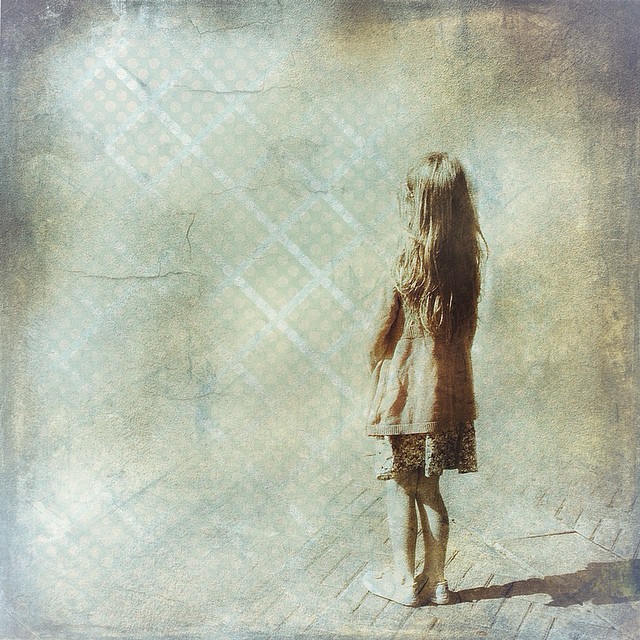
by Jeff Kelley | Sep 17, 2014 | Jeff Kelley, Stories
A little over a year ago, Instagram announced it was adding video to its widely used app. Immediately, a collective groan was heard across the mobile photography community. But while the addition of video certainly added plenty of dull content, (to this day, I still believe most folks scroll right past a video), a good number of artists were able to produce creative works of art.
The account @creativevideo was started in the hopes of finding and highlighting these videos, as well as to encourage others to make their own. And while I’ve always tried to highlight ‘videos worth watching’, there have been a handful that stood out among the rest- with two qualifications: 1) they contained an exceptionally creative idea, and 2) they were created solely using a mobile phone.
While the number of photo editing apps is nearly infinitesimal, quality video editing apps are few and far between. For this reason, finding a video that truly stands out can be somewhat difficult- it usually takes a unique idea to begin with, and may require the use of multiple apps to achieve the end result. The following four videos, to me, stand out, and the artists were kind enough to let me share them and the describe their process.
The first is by Frederic Genest, who came up with the idea of combining Hipstamatic photos with a timelapse app:
Here is how I proceed and you will see that it’s pretty simple at the end. I use Hipstamatic to shoot each picture. Middle or low resolution, because it takes too long to record each picture in high res and it’s definitely not necessary. You need to have in mind that the more pictures you take, the longer the length is. The longer distance you travel in between each shot, the faster the journey is. Then I use the Timelapse Pro app to edit the pictures. Why? because you need to be able to choose a very low number of frames for each picture. The right ratio is 2 frames for each pic and 15 pics per second. This, you can’t do with any other iMovie or slide show app. So you don’t use TimeLapse for what it’s initially made. You click on the edit menu, then “import images”, then “save as movie” in which section you can choose the number of frame per second (15 by default), and you can choose the quality of the compression, as well as add a piece of music from your library. Them you save that film in your library before uploading it to Instagram. Here it is, this is the way I do it.
“Hipstamotionpicture” by Frederic Genest
Mira has made many amazing videos that seem to have a double-exposure effect. This was just one of the ones I was enchanted with. Here, she describes how she does them:
My creative process doing this vid:
Positioning the camera and finding the lighting that dramatizes the scene, then I take a few movies so I have something to work with.
I used Slopro to speed or slow some parts in the movie, Reverse Camera to reverse the movie and Cute Cut to edit it all and get the layered effect and to add music.
@miradelsol
Péw made this amazing time lapse film that stood out from the rest. Here’s how it was done:
About the video, actually the idea just came out.. I always love taking puddle photos, and that day, right after the rain, I went outside to take some puddle shots, it was around 4 or 5 pm. When I looked at the cloud’s reflection in the puddle, the idea came out! So I started to put my iPhone on a tripod, standing around the puddle with the cloud as a background, and started to capture myself using a self timer camera app (camera+ app) …but then I thought it would be awesome if the clouds were moving! So I decided to create a timelapse video, I stood around the puddle and let my iPhone start recording for about 15 minutes! And yes, I was standing still for 15 minutes to get the moving clouds.. I was recording using iLapse for the timelapse and added the music using CuteCutPro. 30 frames per second.
“Standing In Motion” by Ahmad Renaldi
Last but not least, Roberto blew me away with this video; it’s essentially an animated version of his photo editing style. Here’s his process:
For this video, I shot a 39 frame motion burst, then had to individually outline each frame. Then, using Image Blender, I created 38 backgrounds of solid color blocks, to add my “Gridient” effect to the overall piece. Then I created another set of backgrounds to overlay with the original set of backgrounds, which was done in Image Blender as well. I used stark colors in the background so that the overall juxtaposition between the color blocks & outlined frames would provide a nice silhouette look to the running subject. Then after additional touch-ups in ArtStudio, the motion burst slides were ready to be placed on their backgrounds. This meant each image, one by one, had to be matched with the exact backgrounds in the right order. That way, each frame moves in a solid consistent motion, giving a sense of continuity and fluidity. Once the final assembly of the outlined slides & backgrounds was done, everything was spliced together in iMovie. After a few pitch adjustments, and the addition of my music track, the project was finished. Then wahoo, the two day development process came to a close.
“Motion Gridient” by Roberto Cuevas
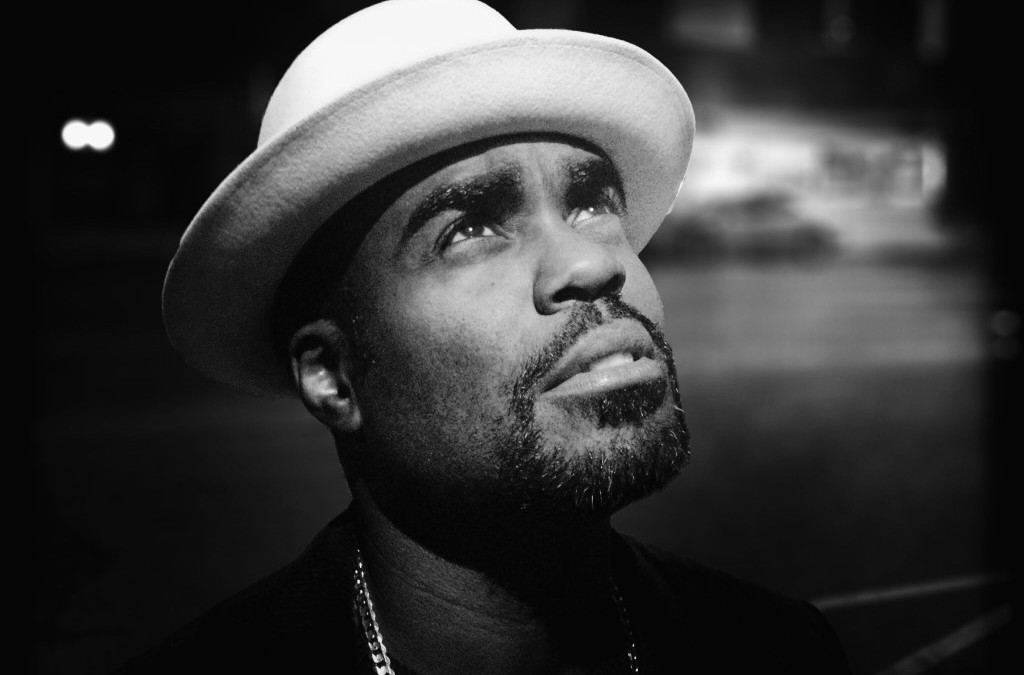
by Jeff Kelley | Jun 30, 2014 | Jeff Kelley, Stories
I approached Ken a while ago with the idea of interviewing him regarding his frequent ‘street portrait’ posts on Instagram. Ken, ever the one to deflect the spotlight, helped me come up with the idea of including some others, and what resulted from this was the following conversation via a Google hangout.
J: Jeff K: Ken O: Omar S: Shawn
J: So thanks for hanging out! Let’s start with basics- what city or town are you located in, and how long have you lived there?
O: I’m living in NYC right now… I’ve been here for a year now. Harlem.
S: Philly. However I have moved around a lot. I’ve been back since 2010. NYC (Park Slope) before that. I’m a Philly native, though.
K: West Philadelphia, about 10 years now.
J: For the purpose of this discussion I thought it might be good to define what a ‘street portrait’ is, versus regular street photography. Who wants to take a stab at it?
S: A street portrait is the capture of a subject [in public] with their expressed permission, in the portraiture format.
O: I believe the photographer must show clearly that there is (was) an interaction between the photographer and the subject. Where the main purpose is to say something specific about that subject. And yes, there needs to be consent in this case.
K: First I would have to say that everything is subjective and different people will have different definitions based on their perspective- but for me a street portrait takes place in a public setting and takes place with direct interaction between subject and photographer.

‘Sam Pugh’ by Shawn
J: Right. I just wanted to be clear as I’ve seen some photos labeled ‘street portraits’ which were really just pictures of random people, who had no idea they were being shot. How did you get started doing them? Did you start with candid street photos first? What led to the interest in street portraits?
O: I’ve always had an interest in people since I started photography professionally. However, if it was not for a job, I wouldn’t have gotten myself to do it… just as with regular street photography. Eventually I just decided to do it for my own work… first started doing street photography only, but living in Harlem, I knew there was something more I wanted to get from the history…so I decided to start this particular Sundays series.
S: My story is that I love candid shots, but at the same time I’m a chatty kind of person. So I would start with candids and work up a conversation with the subject to introduce myself and my project. The success depends on how the subject takes the work, and the forward nature of my request. Often times, it becomes a fixed point of reference – if I don’t get the portrait the first time, maybe I will the next time I see them. Comfort levels are a big factor. My interest simply comes from my love of meeting people and connecting.
K: I’ve always done them, I didn’t know they were called street portraits, but I’ve always stopped people who were interesting to me and asked for their portrait.
O: In my case I am not very chatty… I’m more introverted when it comes to strangers… so it was initially a challenge for me.

‘Odessa’ by Omar
J: Omar – can you talk a little more about the Sunday series thing and how it relates to your job?
O: Yes. As I said, I know there is a lot of history in Harlem and every Sunday people really come out wearing their best outfits and there is a stronger sense of pride and community. That’s how this series got started, I wanted to capture that. This, however, is a completely personal work and it’s not related to any other professional endeavor other than my personal work.
J: Got it. I know Ken has mentioned that Sundays are an excellent time to catch people.
O: It is… I also find people are less guarded.
S: Spring/Summer + Sunday = awesome shots. I like Sundays because there are fewer people around, and those few are more open – it’s an odd type of isolation.
K: I think it depends what you’re looking for. I am extremely conscious of how I present the people I photograph because at the end of the day they are trusting me with their image. It’s a gift. So I feel it’s my duty to cherish it. All of that to say, Sunday is a good day to capture people at their best.
J: Another thing Ken once told me- that this isn’t rocket science- you walk up to someone and ask ‘can I take your picture’ and they either say yes or no… While I’m sure that’s true, there must be some discernment on your end as to who will make a good subject. Is there any way to describe that process? And Ken, I like what you said about feeling some responsibility about it. I imagine that factors in to who you choose to shoot.
S: That process for me is simply going with my gut instincts. People who are friendly attract that to them. However, even shooting someone who isn’t necessarily ‘nice’, so to speak, is a chance to challenge yourself to get a great portrait. I’ve been in so-called ‘bad’ areas and gotten some of my best portraits.
O: Subject-wise, I look for people who catch my eye… either visually because of their physique, or by the way they carry themselves.
K: I work off of interest. If a person or scene is interesting to me, there is a hope that someone else might find the portrait interesting. It’s tough to explain why I might take a portrait of one person and walk past another.
S: I couldn’t say that there’s a formula at work for me, just interesting people in unique situations.
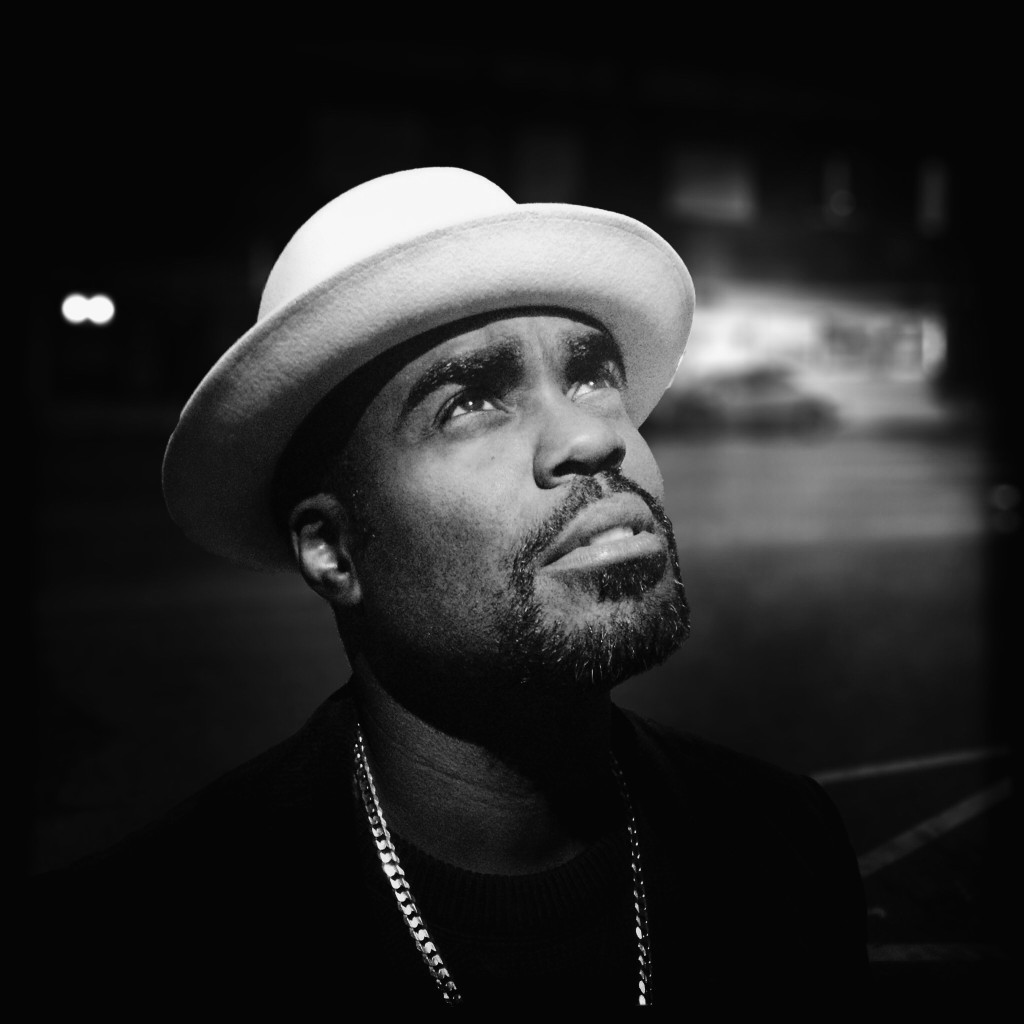
‘Nell Divine’ by Ken
J: What other factors are most important once you’ve gotten someone to say ‘yes’? Background or lighting, for example. What do you look for?
S: Light.
K: Always the light!
J: And do you guys often ask the person to move to a particular spot?
S: Light is everything. Sometimes, to get into better light [laughs]
K: Depends on the interaction. Sometimes the portrait is born out of long conversation and you might get a sense the subject is agreeable to doing more than stand and shoot. Other times you have to make the best out of the little time they’re giving you.
S: Truth. Getting the most from those who give the least – right, Ken?
K: Yes, but sometime I get the least from those who give the most.
J: Oh, can you elaborate on that, guys?
K: Meaning, I work off of vibes. The strength of the interaction, for me, leads to a better portrait.
S: Ok – sometimes you’ll come across a great subject and they’re only giving you seconds to work. You have to engage them in a way that creates that shot or lose the moment.
O: That’s an interesting point though… in my case, I usually try to be as fast as I possibly can… with the photo, and in the interaction. Since I know I am taking some of their time I try to make it as seamless for them as possible, and I feel that helps me and them to feel at ease.
S: That’s a good point Omar. I use the old gift of gab to ease them in and out of the moment.
O: What is that, Shawn? I mean what do you mean by gift of grab? gab*
J: [laughs] Gift of grab might not go over as well.
S: Omar- re: taking someone’s time… I use conversation to keep them at ease. [laughing at] gift of grab
K: “Come here, give me a street portrait!!!” So, that’s your technique! [laughs]
J: How about the editing process after- does the interaction you’ve had with them affect the way you may edit the picture?
O: Not really, in my case…I edit according to what I see on the frame.
S: Editing is best served up on small dishes. Meaning, I feel that editing looks great on Instagram and all; the printed work, not that much. The closer you get to natural 1:1 living scale, I believe one should use far less editing.
J: Makes total sense. Do you all shoot mobile only for street portraits? I guess I’m wondering if approaching someone with just a phone in your hand ever confuses them when you ask to take a picture.
S: I carry both my phone and camera – if I can evolve the situation to use the camera, then I do. Many people aren’t at ease with a real camera pointing at them these days.
O: No, I shoot with a camera (mirrorless, hence smaller )… I know people who do street portraits with the phone… but I know I’ve found some people find it more questionable when it’s with a phone.

‘Color run portrait’ by Omar
J: Interesting – so sometimes you think the phone camera actually makes them feel more comfortable, Shawn? And vice versa, Omar?
S: I read their expressions and go with the tool that makes them the most comfy. People pose differently with either a camera or a phone pointed at them, in my opinion.
O: It might also have to do with how comfortable one is with what you shoot with… meaning, if you are more comfortable with the phone, that projects, and the person feels at ease. I’ve always felt more comfortable shooting with a camera. I remember trying to use the phone on occasion, and people kind of gave a “REALLY, dude?” kind of look.
K: I love my little phone camera but I also photograph with traditional cameras as well. Regardless of the device, I feel that you as the photographer are what makes people agree to be photographed.
K: Although to be perfectly honest, when I have the traditional cameras a lot more people tend to ask to be photographed.

‘Philadelphia State of Mind’ by Ken
J: Right. It’s much more obvious what the function of it is.
K: I don’t get many “Hey you! Take my picture with that iPhone!” requests.
J: That sounds about right. And yeah, are the people who ask usually less interesting? [winks]
K: That’s the question isn’t it? I told you I work off vibes. The people who ask to be photographed are not always the ones you want to photograph.
S: You take requests?
O: I have been asked a few times. I normally comply, unless there’s something specific that might make me uncomfortable.
S: I can’t say that I’ve had requests on the street, phone cam or dslr. The only time that’s happened was at one of my recent exhibitions. But it turned out to be a great portrait. I love swapping between both camera and phone in the moment, to be honest.
J: Anyone have a pic on hand they want to throw out there? Maybe tell us a little bit about what happened? I know, I’m putting you on the spot…
O: I can share a story about that (people who ask to be photographed are not always the ones you want to photograph)…
Recently a woman on the train asked me to take her photo…she was with her children…I took her photo fast because it was my stop and I had to leave… Her kids got really excited but as I had to jump out of the train, they got really upset I didn’t take their picture… As soon as I got out I signaled them to take their picture in from the window… Their faces completely changed and one of them in particular gave me a really priceless expression.

‘untitled’ by Omar
S: I had a moment where I was doing a photo shoot with a client and then a man and his kids walked up and stopped on the corner to wait on the bus. The dad leaned perfectly against a mural of angel wings and the word ‘necisita’ over him… I stopped and asked him if I could shoot him – his kids egged him on to do it It was really sweet to see this guy crack his tough shell for his kids.

‘Need an angel’ by Shawn
S: A really lovely moment. He was mad cool about it. His kids were hilarious.
O: I like the text behind…do you know what it means, Shawn ?
S: “need”
O: Yeah. Plus the wings.
S: Like ‘need an angel’, is what I felt, he is their guardian angel/dad.
O: It’s really whimsical yet insightful.
S: He stopped right there and leaned. I couldn’t ask for better, I just begged him not to move.

‘Dr. Salaam Love, formerly of the Delphonics’ by Shawn
S: One of my favorite shots in the past 6 months is of Salaam Love, former member of the Delphonics. I saw him 3 times in one day in 3 neighborhoods before seeing him on my block, after a full day of shooting. He was sincere and effortless in front of the camera. We’ve stayed in touch since then.
O: Sweet.
J: So he is posing for you there? Looks so natural.
S: No, this is pre-pose.
J: But, he knew you were shooting…
S: Indeed, yes. I love the moments before and after a pose. They tend to be more natural for me. Works into what I like to convey about human nature: everyone is flawed and beautiful at the same time.
J: Well damn, that’s a great title for the article.
S: It’s also how I get my shots to be a little different then most.
K: Here’s my story. I’m interested in hearing your opinions, Shawn and Omar…
I was on Kensington Avenue in Philadelphia, a rough area by nearly any standard… From across the street I saw a man combing his long white hair. I imagined him as what Samson might’ve looked like if he’d never met Delilah. It was obvious to me that his hair was a great source of pride for him and I approached him and asked if he was making himself camera-ready for me. He laughed and said no, but told me I could take his picture if I wanted to. As I framed the shot, I watched all of the strength and glory I witnessed just moments before dissipate into what I can only describe as a look of posed despair. I’ve seen people change when the camera comes out, so at the time I didn’t think much of it and told him to go back to combing his hair so I could capture him in his full glory. He laughed and I saw a glimpse of what interested me initially, and I captured the moment. As I took down his information, a woman tapped me on the shoulder and asked if I was the photographer that paid people in the area $2 for their picture. She was clearly looking for $2 and wanted to know where the line started. I told her I was most definitely not that guy. Explaining to them both that I make portraits of people that agree to be photographed because they want to, not because I dangle money in front of them. Something about the practice didn’t feel right to me, especially in an area like Kensington where I’ve seen people do unmentionable things for a few dollars. If you’re going to help someone, help them out of a sense of altruism, not out of self service. I couldn’t help but wonder if his affected pose was a result of what he thought I wanted, or is this contrived reality just the way that some photographers go about getting street portraits?

‘Shaun of the living’ by Ken
O: Well, from a journalistic point of view, it is considered unethical to remunerate subjects for a story… I tend to follow that principle… I feel that dangling a little bit of money in front of someone for a personal gain is not the best way to go.
S: I’ve never paid anyone for a street portrait, and I imagine I never will. I believe in charity, and I have helped some of the people I’ve shot in ways that I won’t mention (for their privacy). To that end, I don’t shoot people who are homeless, or obviously mentally challenged. Paying for shots reeks of poor judgment and bad ethics.
K: I think you mention a good point about photographers exploiting situations, Omar. I think you have to be clear on why you are in the streets asking people for portraits. That is the first question to ask. If the answer sounds anything like fame, glory or an increase in ‘likes’ and ‘follows’, then pause. There’s rules to this thing here.
O: Exactly.
K: I respect everyone’s right to do things their own way, but I think there is something to be said for being upright in what you do. Helping those that need help is one thing, but tit for tat is something else.
J: Well I think this wraps it up. Any of you have any questions you want to add? Any closing comments? Sage advice?
S: Stay humble, friendly, and open toward people and you’ll get better shots.
K: I hesitate to give advice because I don’t know that it would work for anyone else but I would encourage people to stay true to themselves. Authenticity is currency in the streets (not your business card or the size of your camera). When you play for(to) the crowd you ultimately play yourself. Every street portrait that someone allows you to make is a gift, treat it as such.
O: Ditto… I’d add this… make sure you know your craft before you get yourself to do it. You’ll be more effective and give your subject a better experience if you “look” like you know what your doing.
S: There it is!
O: It’s been a pleasure chatting with you gentlemen.
S: Yeah, this was pretty cool man.
J: Really appreciate you guys taking time to do this. Perhaps we will meet some day, after all we aren’t that far.

Ken
West Philadelphia-based image maker.
Instagram
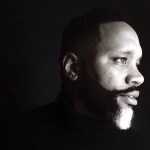
Shawn Theodore
My photographic method has been based on a personal interpretation of existentialism as portrayed in Ralph Ellison’s ‘Invisible Man’ within the modern urban environment, while employing the influences of artists Aaron Douglas, Barkley L. Hendricks and Romare Bearden. I’m not an activist or photojournalist, I am an artist who is passionate about the perception of the people within my diaspora.
Instagram || Facebook || Vsco

Omar Robles
My first connection with visual storytelling was in fact through the art of mime theatre. I had then the privilege of studying under the tutelage of Marcel Marceau at L’École Internationale de Mimodrame de Paris Marcel Marceau. Later, as I went to college to acquire my B.A in Communications and Arts, I discovered in photography a new way of telling stories without words. With photography however, I could immortalize the moments for a little longer. I have since explored as many areas of photography as I possibly can. Amongst all, I’ve found an immense passion for photojournalism. Some of my clients include lifestyle magazines Latino Leaders , Metro San Juan & most recently the Chicago Tribune’s Hispanic publication Hoy.
Instagram || Website

by Jeff Kelley | Jun 9, 2014 | Jeff Kelley, Stories
Grryo Storyteller Series: Justin Johnston by Jeff Kelley
When we were asked to find a storyteller to interview, I immediately thought of Justin Johnston. He is the social media manager for the Mextures app, and his posts are often accompanied by brief pieces of writing that I’ve always found fascinating. I decided to corner him via email and ask him a few questions….
—–
Jeff: Let’s start with your username. Can you verify that you are THE Justin Johnston? Also, tell us a little bit about your mobile photography journey.
JJ: Well I’m sure there are a few Justin Johnstons besides myself on Instagram and I will happily beard wrestle them to keep my “the”. At the end of the day, I’ll keep my “the”, and have made a new friend. It’s a win-win. (Also, googling “beard wrestling”.)
I got into mobile photography a little over a year ago because I needed a new hobby. I was bored with wrangling grizzlies and catching fish using only my beard as a net. I needed something new. I had some friends on Instagram who were taking pictures of things other than themselves in the mirror or their salads, and I thought to myself, “I’d like to take pictures of things other than myself in the mirror, or my salads.” And so I did. And I’ve learned a lot and had a ton of fun along the way. I’ve made so many really great friends all because I have a phone and fingers.

When he reached the door he knew not what he would discover behind it. He took a bunch of keys from his pocket and selecting one, which he had cut himself, he turned the lock. The door opened to his pressure with a stiff and grating sound like that of some ancient tomb. And indeed, that is what this place felt like; some forgotten burial ground for wishes and dreams. A place where the darkest and densest secrets were done away with. What little light that existed in this place broke through cracks in wood and windows revealing years of dust and degradation. But it wasn’t evil that lived here. It was simply spoiled goodness. He believed it could be made right. It could be remedied. It could be redeemed. With that and the sound of rain pinging off of what was left of the tin roof, he began to unpack his bag.
Jeff: Can you tell us a little bit about Mextures (for the three readers who’ve never heard of it) and talk about your position there? Also, I think you should consider making the Mextures motto “Will make even your pictures of salad look awesome™”.
JJ: Well, Mextures, to me at least, is the most powerful photo editing tool available for the iPhone. It’s more than just adding a preset or a filter to a picture. It’s the ability to totally reconstruct a picture. If you looked at some of my Mextures edits and then looked at the original picture, you’d have a hard time believing that they were the same photo. With 9 different packs of overlays you can change the texture, the lighting, the coloration and pretty much every aspect of a photo. And it really has become a very cool and supportive community of loyal users, especially with everything that was added when we released version 2.0. And you can even edit mirror selfies!
My position with Mextures is pretty simple: I do very little and get credit for way too much. Seriously. Merek, the creator of Mextures, is a genius. Not to mention he also has a great beard (not near as luscious as mine, for the record). But what I have the privilege of doing is working primarily with the Instagram crowd. I spend a lot of hours in the #mextures and #mexturesapp hashtags sifting through thousands of images; liking pictures and selecting images for Instagram and Facebook features as well as the Inspiration Feed we have inside the app. Because of this I’m constantly inspired by what others are doing with the app. And yes, I have seen a few salad edits as well.

He unpacked his few belongings into a dresser long abandoned. Its paint peeling back in long strips as if it were transitioning into some prehistoric creature. He placed the one picture he still owned… A memory trapped in amber that he refused to set free for fear of losing it…. against the wall and started at it for a moment. For a moment he travelled back into time and felt those same feelings and smiled that same smile. But reality is cruel and quick and forced him home. Forced him back to this home. If you could even call it that. More of a cemetery really. Every inch of the place creaked and groaned and fought as the wind outside pushed against it. Like an elderly man fighting with all of his might just to move from sitting to standing. Yes. This house was quite elderly. And like any elderly person, so full of stories. Some insignificant and rife with missing pieces. But some… Some worth sitting and listening to… Like a child on a grandfather’s lap. And that is exactly what he aimed to do. To sit. To listen. No matter the time it took. Because the fickleness of time no longer mattered to him. And so the storytelling began.
Jeff: Your edits are often accompanied by what I would describe as ‘one paragraph novels’. I’m going to choose to believe that they are all 100% true stories. But feel free to dash my dreams on the rocks.
JJ: I guess that every “one paragraph novel” that I write has some truth to it. That has been one of the fun things about writing them. People relate. It may not be truth for me, but it’s truth for someone reading it. And now I’m kind of hooked on writing them.

It spoke to him in the silence. Through aged floorboards, peeling wallpaper and spiderwebbed window panes. Through rusted nails, fragments of glass and faded portraits. Here the days were like nights and the nights were like solar eclipses. It spoke through dead memories and forgotten laughter. It spoke to him in whispers. And in the whispers he heard the repetition of a phrase that decades later would echo in his mind each time he closed his eyes. It spoke, “I am married to darkness.”
Jeff: How would you describe your process when you write one of them? Is it like a creative muscle that needs to be continually worked? Or a garden of ideas, of sorts, that can’t be stifled? Wow, those were slightly lame. I’m sure you can do better.
JJ: Hahaha! Yes. It’s like a rainbow of words and letters and I’m the proverbial leprechaun at the end of the rainbow stealing the pot of words strung together to make sentences strung together to make paragraphs. There’s something about a unicorn in there too. Or so the legend goes. It actually started out as a joke. Whenever I would collaborate with someone and edit one of their photos, I’d create some ridiculously fantastical backstory about their life. But as things go, eventually I became a little more serious when writing them. I wouldn’t necessarily say I have a process. I’m not that organized. Some days I have a phrase stuck in my mind that I build the story around, but most days I sit down and write the story just before I post. I look at the picture I’m going to post and my overactive imagination does the rest of the work. And then some pictures I string together for a series of stories. Those are fun because, since I know what direction I’m taking the story ahead of time, the story influences my editing process.
Jeff: One of the things I really like about these is that each one leaves the reader wanting more, yet at the same time they are totally able to stand on their own. Is that hard to do, or are you just naturally a genius at finding the right balance?
JJ: I’m not a genius. But I was probably the smartest kid in my class through most of high school. Side note, I was homeschooled through most of high school. You do the math. That wasn’t really intentional but it makes sense because I wrote them all separately. So I guess the shape of the stories really depends on my mood at the end of that particular day. And with this particular series, with different angles at different times of day with different edits, you really catch a different vibe from the photo.

It wasn’t the house that he was trying to reason with; that, ultimately, he was trying to destroy. It was everything that it stood for. His dead and dying memories and the rest that so eluded him. And as that terrifying phrase echoed over and over again, I AM MARRIED TO DARKNESS, he realized that it was no longer a whisper crawling up from between the floorboards, it was inside of him. He was a part of this house as much as the nails and beams that (barely) kept it standing. And so he whispered back…. To himself… To the walls…. To the boarded windows… To the crumbling drywall…. I never stopped looking for you. I never stopped looking for you. I never stopped looking for you. And the haunted love song carried on.
Jeff: So then it’s safe to say you don’t know how this story will end?
JJ: Well I have a pretty decent idea of what direction I’m going to take, but I’m not sure how many more “chapters” I have. We’ll see how it all ends up unfolding. So, no. I don’t really know how it’s going to end.
Jeff: *pauses* sorry, I got lost in your beard for a moment there. Do you have any favorite writers/story tellers that have influenced how you write? Traditional or non-traditional.
JJ: You wouldn’t be the first. It’s a natural response. I have so many favorites, but the two who have influenced me the most by far would be Kurt Vonnegut and J.D. Salinger. Those two have influenced me, not just in my writing, but in the way I view life as well. The first time I read “The Catcher in the Rye” I identified with the main character, Holden Caulfield, so much. Since then I’ve read it at least 5 times. And Vonnegut was such a brilliant man and writer. He experienced so much pain and sadness in his lifetime and yet he was still so intelligent and full of humor. I’ve read basically everything he has every written.
Jeff: Actually, I meant I was literally lost in your beard. Thankfully I found the way out! Small door by the left cheekbone. We’d better wrap this up before it happens again. Any closing comments or advice?
JJ: You’ve discovered the secret passage to my heart. I don’t really have any advice because I don’t really know what I’m doing. But to anyone out there trying to find their “voice” on Instagram, I would just say stick with what you enjoy. Don’t let people or “followers” dictate what you post or how you edit. Do what you love. In the end that’s all that matters. Also, eat Oreos. Lots and lots of Oreos.
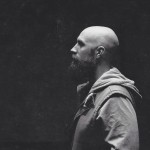 Justin Johnston
Justin Johnston
Professional human being. Unprofessional and unpolished photographer and storyteller.
Website

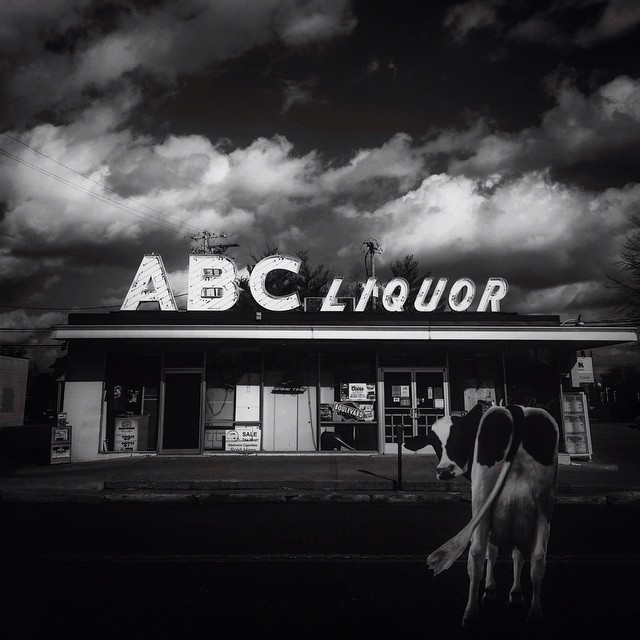

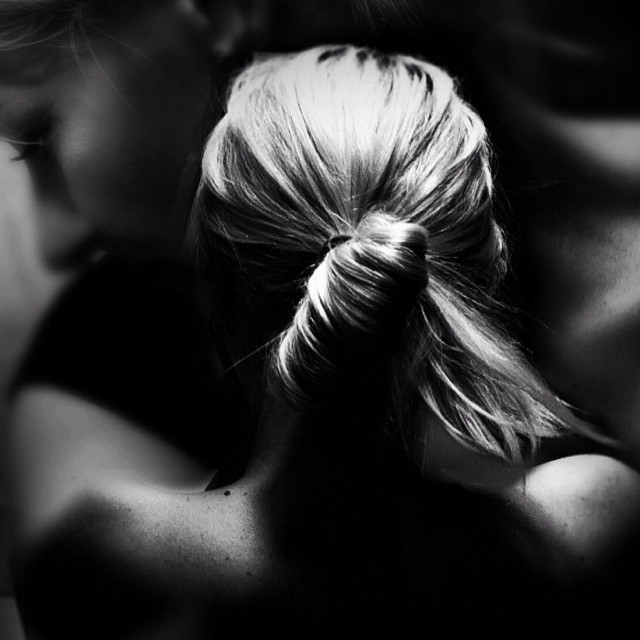
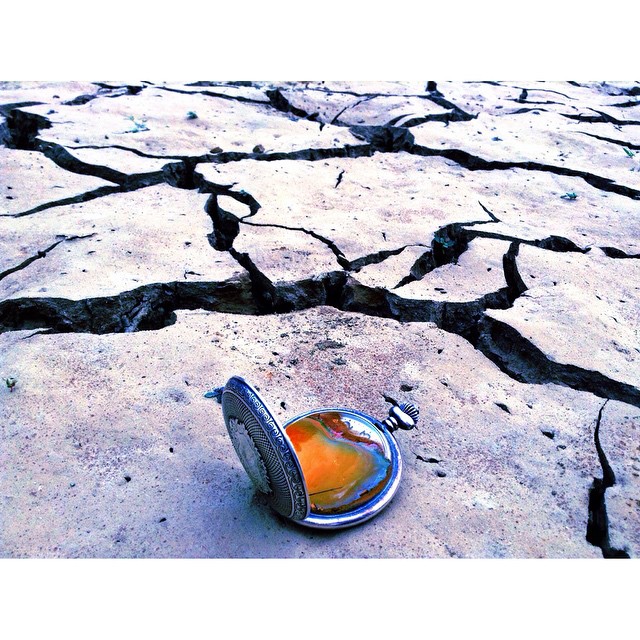

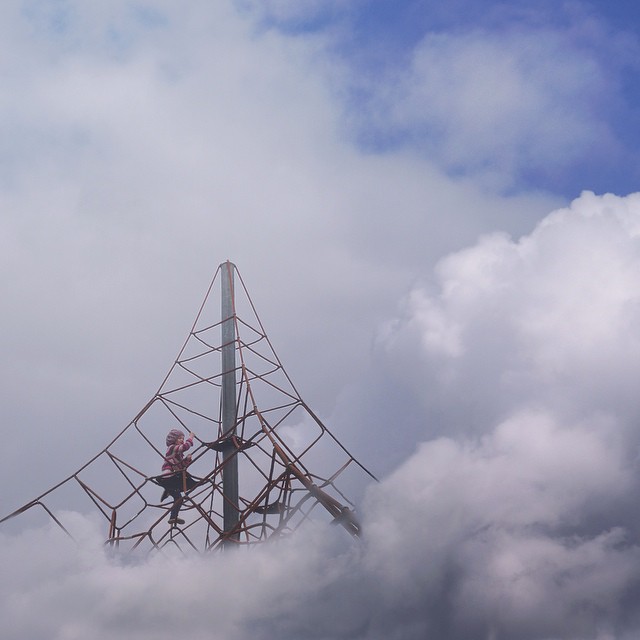

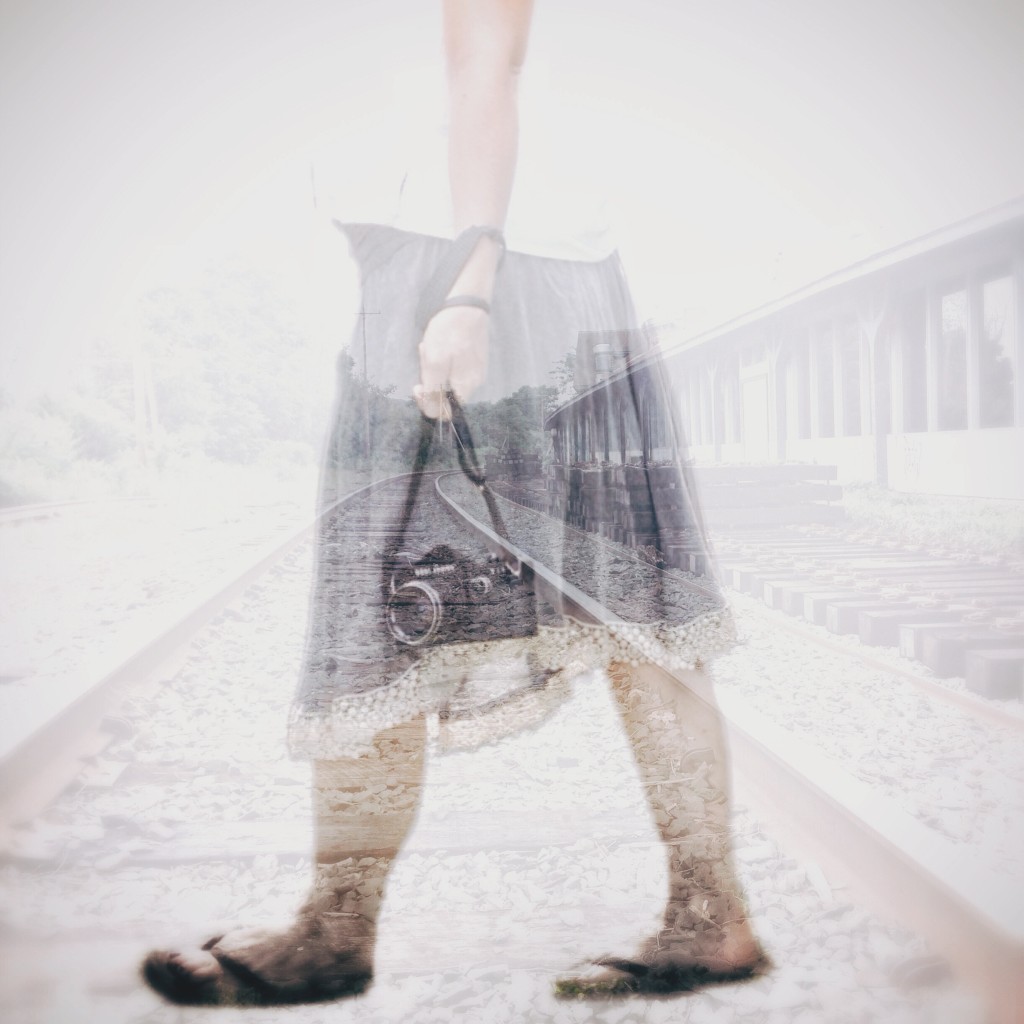



















 Justin Johnston
Justin Johnston